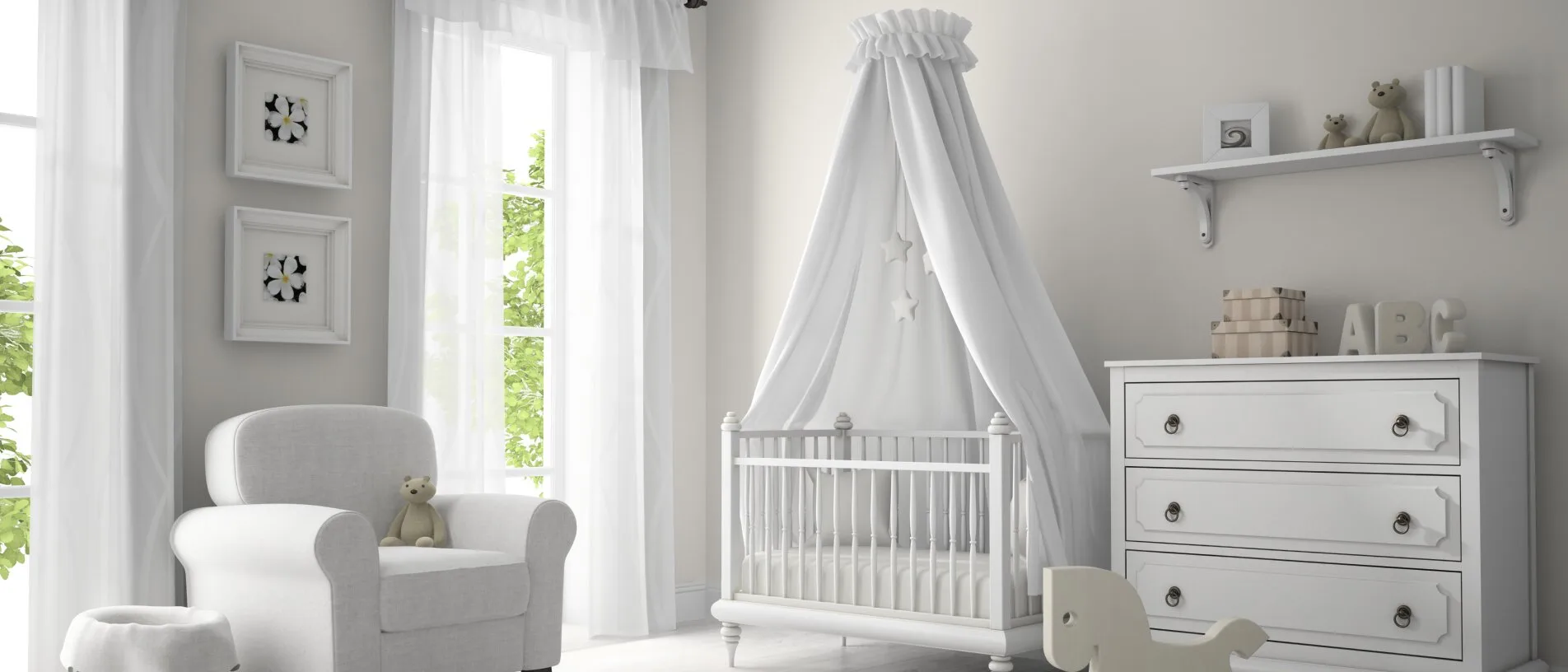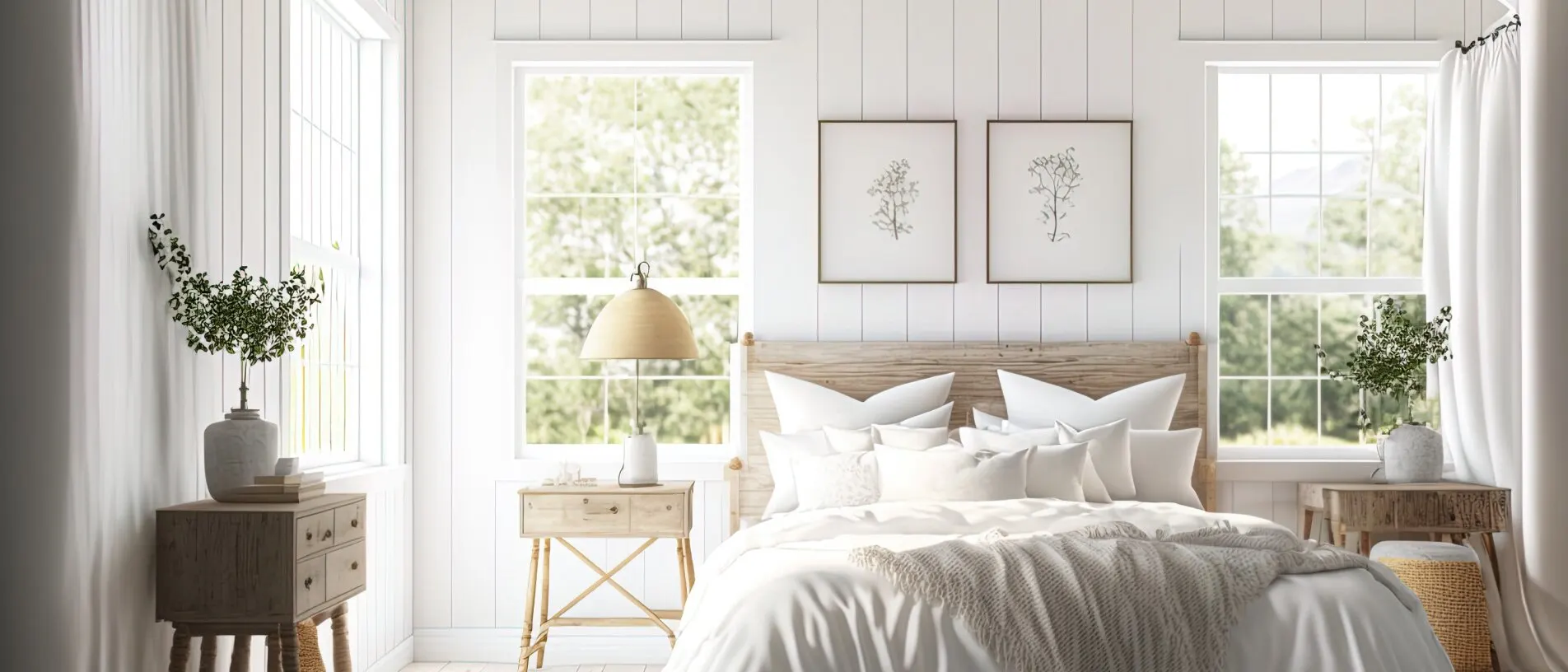You're on the list
By signing up, you agree to receive email marketing.


A crib is the most important piece of furniture in a nursery or kid's room. That's why choosing the right one is so critical, and there are five things to consider.
Before you can choose the right crib, you should have a basic understanding of their designs, how they work, and any optional or additional features.
Cribs come in standard, convertible, and portable designs.
Durable and stationary, standard models offer a simple, sturdy design suitable for everyday use from infancy through toddler years.
Designed to grow with your child, convertible models transform from a standard crib to a toddler bed. Some models can even extend into a full-sized bed.
These cribs are lightweight for easy transport. You can set them up quickly and fold them for compact storage. Portable cribs are ideal for travel or as a flexible option to use at home.
Carefully measure your room's dimensions to ensure the crib you're considering fits. It's also a good idea to think about a few different layouts to give you flexibility in how you set up your nursery.
Here are a few additional features to consider when choosing a crib:
Wheels make cribs easier to move, making them more versatile and letting you easily clean the floor beneath. If you choose one with wheels, make sure that they lock in place so the crib doesn't roll around.
Most cribs are made from wood or metal, which are both durable materials. The one you choose is a matter of preference.
Some cribs have wrap-around slats for more visibility and airflow, while others provide flat panels at either end to prevent kids from reaching particular objects.
Some cribs feature decorative posts or finials at the corners, which can add a stylish, classic look. You can also find designs with roofs or awnings, doubling as additional shade and a decorative touch.
Safety is the first thing parents think about when deciding on a crib.
Although many vintage designs have a unique or appealing aesthetic, we recommend going for newer models when choosing a crib. Over the years, the CPSC has made multiple statements on crib safety.
The spacing between the slats is a key safety consideration on a crib. The distance between crib slats should be 2 3/8 inches or 6 centimeters.
Paint chips, loose screws, and splinters are examples of blemishes that could also hurt your child. Carefully inspect the hardware and frame from top to bottom for any signs of damage, even if the crib is new.
Safety may come first, but comfort is a close second. And what most determines crib comfort is the quality of the mattress you choose.
Make sure your mattress and crib measurements match to get a tight, snug fit. Oversized crib mattresses can create a curve at the bottom, affecting the baby's posture. A mattress that's too small can make a crevice in which the baby's head could get stuck.
Aesthetic elements and interior design themes apply as much to nurseries as they do to other rooms. When choosing a crib, you also need to consider:
Modern, minimalist designs allow cribs to blend with the rest of your nursery set. Conversely, a traditional or ornate look will help a crib stand out and define the room.
Most cribs are made from wood or metal, offering durability and different aesthetic appeals. Solid wood, for example, is sturdy and you can craft it into various designs. Metal, on the other hand, provides a sleek, contemporary feel.
Crib color and finish also matter. Neutral colors like whites and grays are versatile and popular. To make a bold statement, vibrant colors like scarlet can have a strong visual appeal. Depending on your preference, you can also experiment with finishes to make them glossy, matte, or even distressed.
Finally, remember that regardless of style or design, you'll eventually need to replace a crib as your child gets older.
That's why factors such as durability, and convertibility also come into play when choosing a crib.
Between nightstands, dressers, chairs, and changing tables, a lot goes into designing a kid's room. But no piece of furniture is more critical to a nursery than the crib.
Understanding crib basics, prioritizing safety, and considering comfort and design will start you down the path of choosing the right crib. Keep these tips in mind, and you can shop with confidence for the perfect crib — safe, comfortable, and stylish — to be the focal point of your nursery.
You're on the list
By signing up, you agree to receive email marketing.